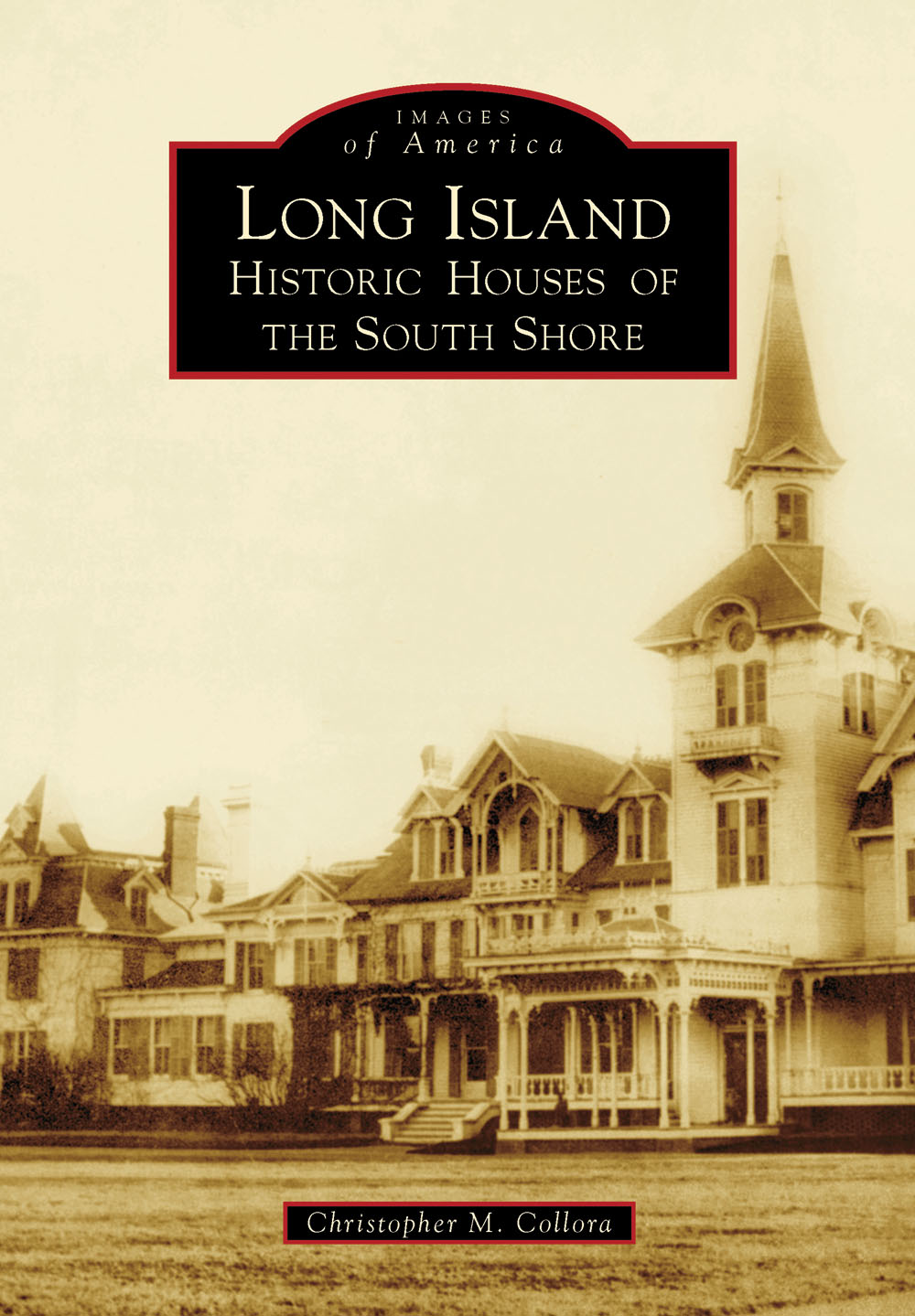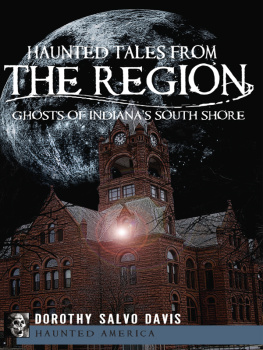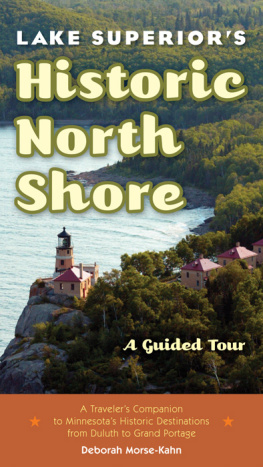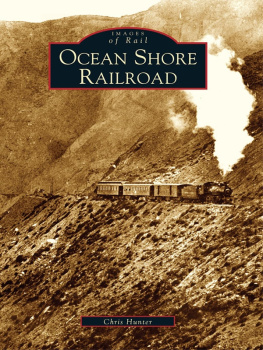
IMAGES
of America
LONG ISLAND
HISTORIC HOUSES OF
THE SOUTH SHORE

This map shows the South Shore of Long Island, the area covered in this book, from Massapequa to Mastic. (Courtesy Map of Long Island, by Beers, Comstock, and Cline, 1873.)
ON THE COVER: This eclectic-style mansion may be the most unusually styled house on all of the South Shore. The mansion was originally built by Edwin Augustus Johnson around 1850. James Neal Plumb eventually owned it and made several architectural alterations, resulting in the unusual architecture of the mansion. (Courtesy East Islip Historical Society.)
IMAGES
of America
LONG ISLAND
HISTORIC HOUSES OF
THE SOUTH SHORE
Christopher M. Collora

Copyright 2013 by Christopher M. Collora
ISBN 978-0-7385-9803-1
Ebook ISBN 9781439643136
Published by Arcadia Publishing
Charleston, South Carolina
Library of Congress Control Number: 2012944413
For all general information, please contact Arcadia Publishing:
Telephone 843-853-2070
Fax 843-853-0044
E-mail
For customer service and orders:
Toll-Free 1-888-313-2665
Visit us on the Internet at www.arcadiapublishing.com
This book is dedicated to my mom for always encouraging me to write.
CONTENTS
ACKNOWLEDGMENTS
This book was made possible with the help of the following people who assisted in my research. Thanks to Nancy Melius, president of Historic Long Island Gold Coast Mansions, for encouraging me to report stories on historic mansions. Thanks to author Paul Mateyunas for his encouragement and advice. Thanks to my former journalism professor John Hanc for inspiring me to include the Thomas Jones story and for teaching me to be a better print reporter. Thanks to Chuck and Trish Howlett for their support. Thanks to Ray Lembo, whose expertise on history has been a tremendous help. Also, thanks to Rays company, Rajen Media (rajenmedia.com), for helping me with several picture scans. Thanks to Mary Cascone, whose outstanding assistance was invaluable.
Additional thanks to the following: East Islip Historical Society president Ray Lembo and Frank Szemko; Suffolk County Historical Society director Kathryn Curran and Ned Smith; Islip Hamlet Historical Society president Victoria Berger; Town of Babylon Office of Historic Services archivist Mary Cascone; Village of Babylon Historic and Preservation Society curator Ruth F. Albin; Bay Shore Historical Society president Barry Dlouhy, Priscilla and Bob Hancock, and Mike Carmody; West Islip Historical Society president Carolyn Agenjo, Katie Hafele, and Bill Jantz; Lindenhurst Old Village Hall Museum director Johanna Sandy; Amityville Historical Society president Pat Cahaney, William Lauder, and Seth Purdy; Historical Society of the Massapequas president Bill Colfer, George Kirchmann, and Lillian Rumfield Bryson; Suffolk County Parks Department, Richard Martin and Eric Crater; Bayport Heritage Association, James Connell; Sayville Historical Society president Constance Currie; Long Island Maritime Museum, Arlene Bakewicz and Barbara Forde; the Post Morrow Foundation; US National Park Service, William Floyd Estate Archives, Fire Island National Seashore, MaryLaura Lamont; Sagtikos Manor Historical Society/George Weeks Memorial Library, Christine Gottsch; Russ and Lynda Moran and Ellen Egelman; Jackie Ruffino; Cathy Gonzalez; Ken Spooner of The Knapps Lived Here (www.spoonercentral.com); the Nathaniel Conklin House Museum, Karen Petz; Sayville Public Library, Alice Lepore; Medford-Patchogue Library, Mark Rothenberg; Suffolk County legislator Wayne Horsley; Beverly C. Tyler of Three Village Historical Society (www.historycloseathand.com/); Patchogue Historical Society, Steve Lucas; Town of Brookhaven historian Barbara M. Russell; Dowling College Library Archives and Special Collections, Diane Holliday; Law Firm of Reilly, Like & Tenety, Irving Like; Bellport-Brookhaven Historical Society, Steve Czarniecki; and Lena Pless.
INTRODUCTION
The South Shore of Long Island is one of the oldest historic regions in the United States. Centuries ago, Native American tribesShinnecocks, Massapequas, and Islipshunted and harvested fish and shellfish for survival. The islands idyllic setting and waterways proved attractive to European settlers as they made their way to the New World in the early 1600s. Religious freedom seekers, who first came to the Massachusetts Bay Colony in 1620 and subsequently began spreading out to new colonies such as Rhode Island and Connecticut, eventually sailed across the Long Island Sound, setting up towns on the far eastern end of the island and its north shore. Far to the west, Dutch settlers began inhabiting Manhattan Island and gradually moved eastward to what are now the New York City borough of Queens and the nearby area of present-day Hempstead.
With the establishment of the new nation in the late 1700s, distinctive patterns of settlement began to take shape as traces of Dutch and New England cultures began to dissipate and a more Americanized version of society emerged. By the late 1800s, although the rural economy remained intact and historic maritime traditions persisted, the modernization and urbanization of American society gradually began impacting the islands development.
At the end of World War II, when I was born and lived in the village of Babylon, one could see the transformation of the island begin to take shape. Many returning veterans, such as my father, who entered the Army during the Great Depression, were ready to live the American Dream. The island was now undergoing a rapid transformation, as the Crabgrass Frontier would soon engulf the farms, Colonial-era villages like Babylon and Amityville, and pine forests with the Levittowns of the new suburbia.
Growing up at a very early age in Babylon Village, I began witnessing some subtle changes as new housing developments were springing up just to the east of the village in the hamlet of West Islip and to the north in North Babylon. In fact, in 1950, my father purchased one of the five Cape Cod homes in West Islip. It was the first housing development in that community. Still connected to family in Babylon, where my mother was raised, I continued to spend time in the village, attending the local parochial school there, and at various times, I would walk across the now dilapidated cement bridge that was once part of the famous Hawley Estateone of the more notable smaller mansions on the South Shore, adjacent to the village. As I got older and rode my bike throughout the area, I would ride by the noted Arnold Mansion, where my grandmother, an Irish immigrant, once worked as a domestic and met the famous silent film star Rudolph Valentino.
From Massapequa east to Oakdale, this part of the South Shore became home to many business entrepreneurs, celebrities, and other wealthy personages from the Gilded Age to the Roaring Twenties. Although it did not rival the North Shores Gold Coast in terms of the size of the buildings, it did have it own lineup of monumental houses and estates. Among them were the William K. Vanderbilt Estate in Oakdale (now home to Dowling College); the Arnold Estate in West Islip, which had its own carriage path from the Great South Bay to the mansion on the north side of Merrick Road; and the Frederick J. Bourne Estate, also in Oakdale (former home of LaSalle Military Academy and now an extended campus of St. Johns University).
Next page









